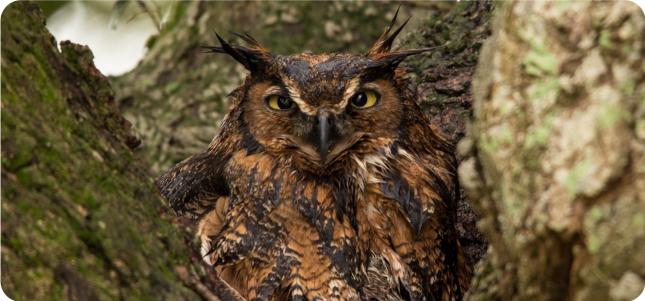How You Can Help Your Birds Before & After the Hurricane
***THE STORE WILL BE CLOSED THURSDAY, SEP. 26TH & FRIDAY, SEPT 27TH DUE TO HURRICANE HELENE***
***Follow us on Facebook for possible closures or changes in store hours due to the storm***
BEFORE THE STORM...
BRING IN FEEDERS AND BIRD BATHS TO PROTECT THEM FROM DAMAGE! Make sure seed is stored where it will be kept dry. If you're hunkering down at home, you might want to take the opportunity to give your feeders a through cleaning.
• Birds and hurricanes have coexisted for ages, and birds have developed many strategies to survive and rebound from the effects of these natural disasters.
• Birds are sensitive to barometric pressure, so they can sense when a major storm is on the way.
• In response to an approaching hurricane, some birds will migrate earlier than they normally would. Research has found that sparrows speed up their fall departure in response to falling barometric pressures.
• Some migrating birds move toward the eye of the hurricane, staying in this calmer area until the hurricane dissipates. They often end up hundreds of miles away from their normal migration route.
• Birds that don’t migrate often shelter in place, trying to find cover wherever they can. Many non-migratory birds seek shelter inside thick bushes or on the leeward side of trees.
• Cavity roosting birds, such as woodpeckers, chickadees and nuthatches, may seek shelter in their nest or roosting cavities, and some will seek out man-made nest boxes.
• Research (although limited) seems to show that most land birds weather hurricanes well if they can find appropriate cover.
• The most direct impact of hurricanes that occur during the storm are most evident in seabirds. The indirect effects, which occur in the storm’s aftermath due to damage to the habitat, are most evident in land birds.
AFTER THE STORM...
GET FEEDERS AND BIRD BATHS BACK OUT AS SOON AS POSSIBLE! High winds and extensive floodwaters will damage numerous habitats and many of the natural food sources that are typically available for birds, particularly for ground-feeding birds that eat insects, worms and seeds. The storm will also decimate countless trees and shrubs that birds use for food and shelter.
You can help birds and wildlife survive this demanding time by providing them with much needed food, fresh water and shelter.
• Hurricanes dramatically affect birds’ natural habitat and food sources, which can put pressure on already stressed species.
• A major threat to bird survival is the vegetation damage cause by hurricanes and some birds may perish since the local habitats no longer provide the food they need.
• Due to the lack of food resources, some birds may disperse in search of more suitable habitat and others will seek out artificial sources of food.
• Migrating hummingbirds are known to swarm nectar feeders in hurricane ravaged areas where natural nectar plants have been destroyed.
• Population declines of land birds are often related to their diet and the loss of food resources. Fruit, seed and nectar feeding birds struggle the most with the loss of habit, while insect eating birds and birds of prey are less effected by the storms impact.
• Providing supplemental bird foods, fresh water and shelter are very important actions to take to help the bird population in your area after a hurricane.
• This hurricane could possibly impact a large portion of Florida. Surrounding areas that are less affected will serve as refuges for displaced birds. Keep an eye out for unusual birds and notify us if you see any.
As we all work to recover from this hurricane, having the birds return to our backyards can bring us a sense of hope, renewal and peace. The birds will help us recover and you can help the birds recover as well.


